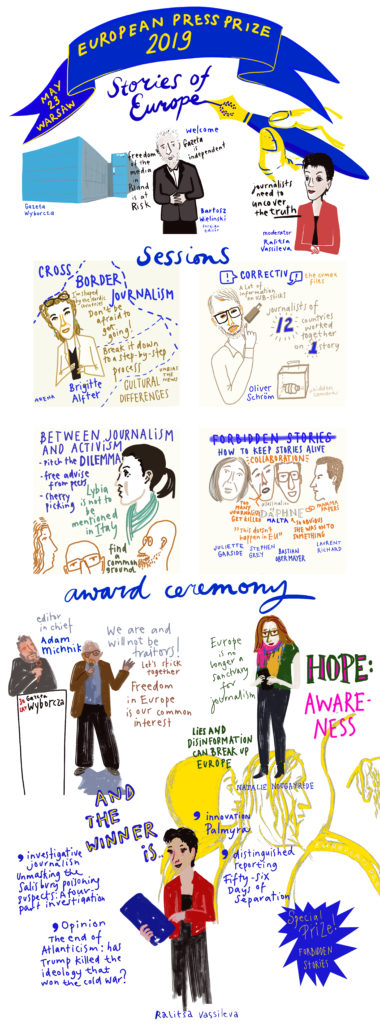Watch the 2019 Aftermovie
We proudly present the official Aftermovie of the European Press Prize 2019 Award Ceremony.
As one of the laureates in the video puts it: “We are all from individual countries, working together to create something bigger.”
The 5 winners of the European Press Prize 2019 are found here.
Special thanks to our hosts at Gazeta Wyborcza and our members: The Guardian Foundation, Thomson Reuters Foundation, Vereniging Veronica, The Irish Times Trust Limited, Jyllands-Posten Foundation, Agora Foundation, Politiken Foundation, Media Development Investment Fund, Stichting Democratie en Media, ANP and De Balie.
– Produced by Néstor Romero Clemente and Are We Europe.
– Creative Assistant: Christina Desylla
– Interviewer: Sharon Zervaas
– Music: Haku Yeo
A visual summary of the 2019 Award Ceremony
As you may have read, the winners of the European Press Prize 2019 were announced at the official 2019 Award Ceremony at Gazeta Wyborcza in Warsaw on May 23. We had the pleasure of welcoming Eva Hilhorst, founder of Drawing The Times, to the event to create a visual summary of the evening ceremony and the full day program.
Eva’s visual summary includes highlights from Natalie Nougayrède’s keynote talk, Gazeta Wyborcza’s welcome speech by Adam Michnik (editor-in-chief) and Bartosz Wielinski (foreign editor, member of the European Press Prize preparatory committee), insights from the sessions by Brigitte Alfter (ARENA) and Oliver Schröm (CORRECTIV), Nadja Groot and Nienke Venema from the Democracy and Media Foundation, Forbidden Stories, and more.

By Eva Hilhorst (Drawing The Times)
If you’d like to read more about the 2019 Award Ceremony, be sure to have a look at this written summary by bureau member Aylin Özalp for De Balie.

